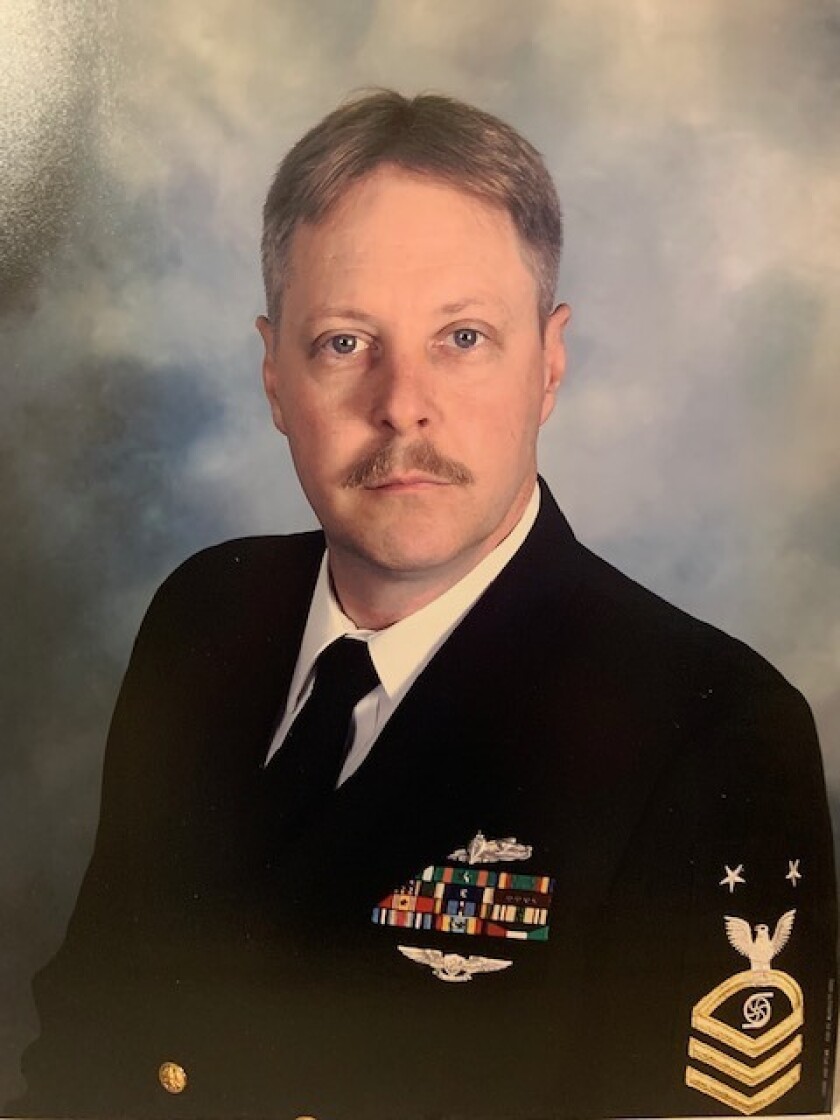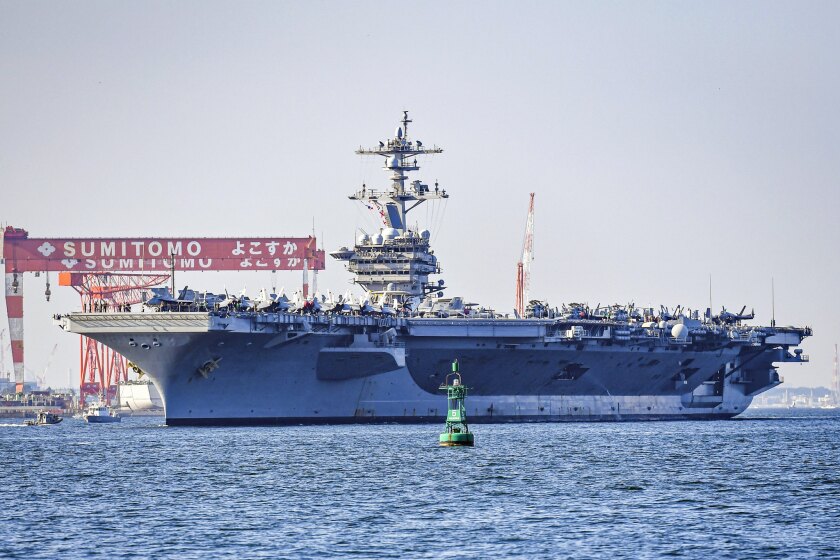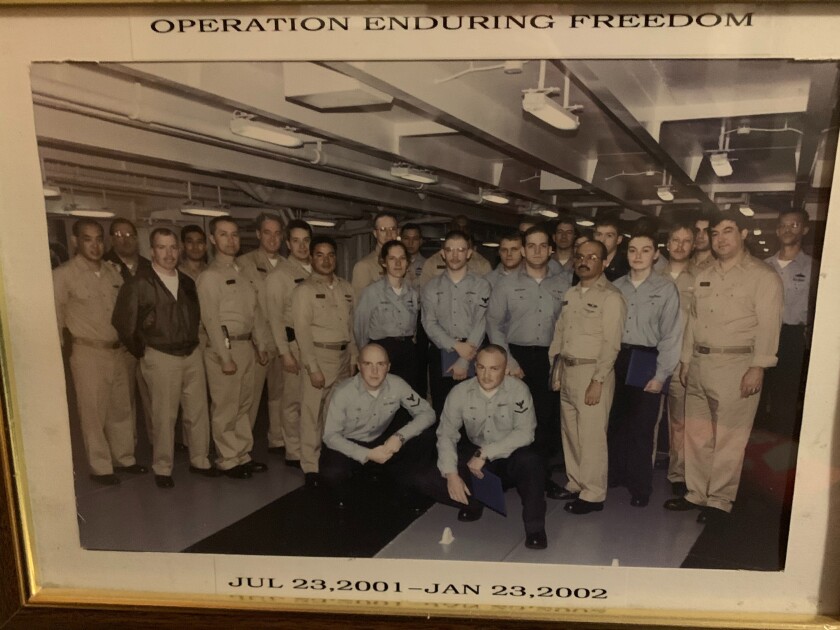WADENA, Minn. — Wadena County Veterans Service Officer David Anderson recalls sleeping in his bunk on board a Naval ship in the Persian Gulf. Up to this point, he’d been in the Navy 19 years without any engagement like he was about to enter into.
That day, Sept. 11, 2001, Anderson was sleeping aboard the USS Carl Vinson when a shipmate awakened him and said someone had just flown a plane into the World Trade Center. Sleeping was no longer an option.
ADVERTISEMENT
“As I was walking into the lounge, I looked at the television set and I watched the second airliner hit the second tower of the World Trade Center, and I looked at the guys in the lounge and I said ‘boys I think we’re at war,’ not realizing it was going to be 20 years of war,” Anderson said, recalling that day from his Wadena County office nearly 20 years later.
Each moment is still crisp in his mind.

While his home country was under attack by terrorists hijacking airplanes, everyone on board the ship had their identifications checked and all officers were carrying sidearms. A change in attitudes was at hand. Anderson had to trust that things were going to be OK for his family at home.
“You have to put a lot of faith in your family and you have to put a lot of faith in your higher power to look after your family,” Anderson said.
While American flags were flying at home, Anderson and the crew were preparing for an assault on Afghanistan like nothing seen before. That unparalleled attack in Afghanistan began less than a month after attacks on American soil.
ADVERTISEMENT
Anderson recalls doing his work down below the deck as a Master Chief Gas Turbine Service Technician (GSMC), then surfacing to watch the onslaught of Tomahawk missiles released on terrorist targets. He didn’t pull the triggers; rather, he made sure the turbine engines were keeping the ships at the ready and on the move. The following day the crews would get debriefings on the targets hit.
Anderson said they fired massive amounts of missiles and bombs on Afghanistan, but says they were not indiscriminate: Each was a specific target using laser-guided systems or GPS.
The terrorists were able to find a way to create casualties and fear by overtaking several airplanes. The U.S. military, however, used its technology to drop missiles and bombs exactly where they felt the greatest threats were. Civilians, unfortunately, were killed in the process. As of 2021, some 71,000 civilians have been killed in Afghanistan, according to the Watson Institute of International and Public Affairs.
The destroyers remained in the Persian Gulf until just before Christmas. Anderson was at sea for Operation Enduring Freedom for 112 days and then spent Christmas in Singapore. By that time, little of any Taliban resistance remained.
Anderson looks back at the air strikes on Afghanistan as an amazing showing of the power and capabilities of the United States.
“I look back at it all with fond memories,” Anderson said. “The good, the bad and the ugly.”
ADVERTISEMENT

20 years later
Anderson still looks back at Sept. 11, 2001, and recalls the heroes of United Flight 93, who brought down a plane near Shanksville, Pennsylvania. He believes the U.S. did what was needed following the terrorist attacks, but never should have stayed as long as they did.
“I think we were in Afghanistan way too long,” Anderson said. “We probably shouldn’t have been there past my retirement (2005).”
“Just the way they took us out now … I don’t agree with any of that,” Anderson said.
He admits, he is hurt by the way the U.S. left Afghanistan, but still loves his country.
“I love this country,” he said. “I’ve been to a lot of countries, 26 I think, there’s not a day that goes by that I don’t love this country.”
ADVERTISEMENT
Anderson remembers to this day the moment the second airliner hit the World Trade Center. He has a clock in his bedroom that does not run anymore. He’s set it to 9:03 to remember that moment of impact. Tattoos on his arms bear mention of his years of service, like any sailor would, so others can remember his service to the country.
Anderson grew up in Sebeka, Minnesota, and lives there to this day, where he is also the mayor. He got into the Navy due to a lack of job prospects in the area in the 1980s. Prior to that he was working at a bakery, being laid off from his job with the North American Car Company. He decided to contact a recruiter on a Monday in April 1982. He took some tests on a Wednesday. He went in for preprocessing on a Thursday.
His classifier told him he’d make a great candidate for gas turbine service technician. The only catch was he’d have to either leave that day or the next day as he apparently held the last two spots for the position.
“Come to find out, it’s a sales tactic,” Anderson said. Even so, he was off to boot camp the following day.
On Friday night, Anderson arrived at Great Lakes Naval Station after saying goodbye to family and his girlfriend Donna, who is now his wife.

ADVERTISEMENT
Naval career
- 1983-88: Anderson was on his first ship for five years. He witnessed his ship, the USS Leftwich blow up the Rashadat oil platform.
- 1988-92: Served shore duty.
- 1992-95: Served on his third and fourth ship, from the USS Ingersoll to the USS Crommelin.
- 1995-97: Served on the USS John S. McCain until 1997.
- 1997-2000: Served on shore duty.
- 2001: Started preparing for deployment in August 2001, headed for Hawaii, Singapore then onto the Persian Gulf by the first week of September on the USS Carl Vinson, a super carrier.
- 2003-05: Boarded USS Carl Vinson, once again conducting exercises for allied countries and keeping an eye on North Korea. Anderson retired in 2005 after 23 years of service.










